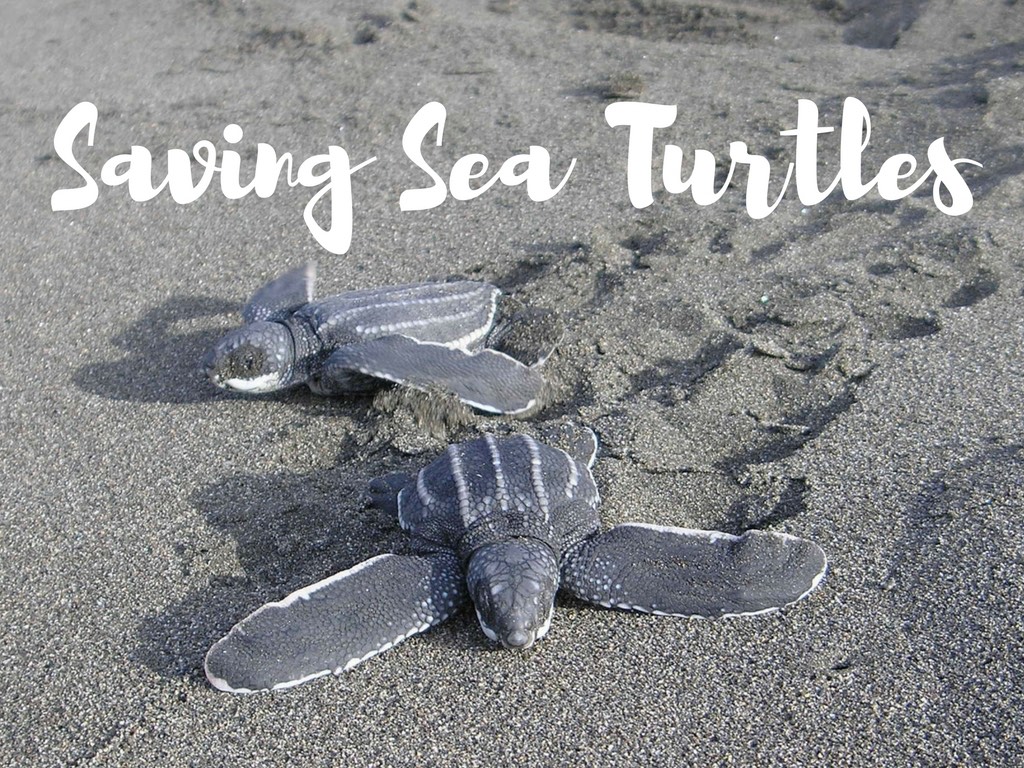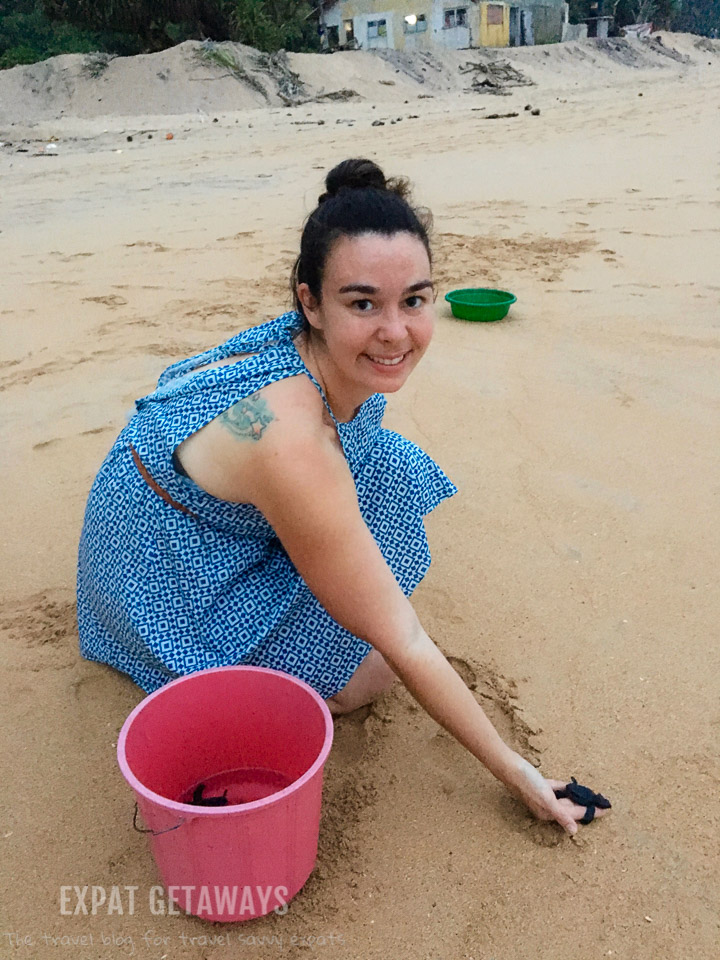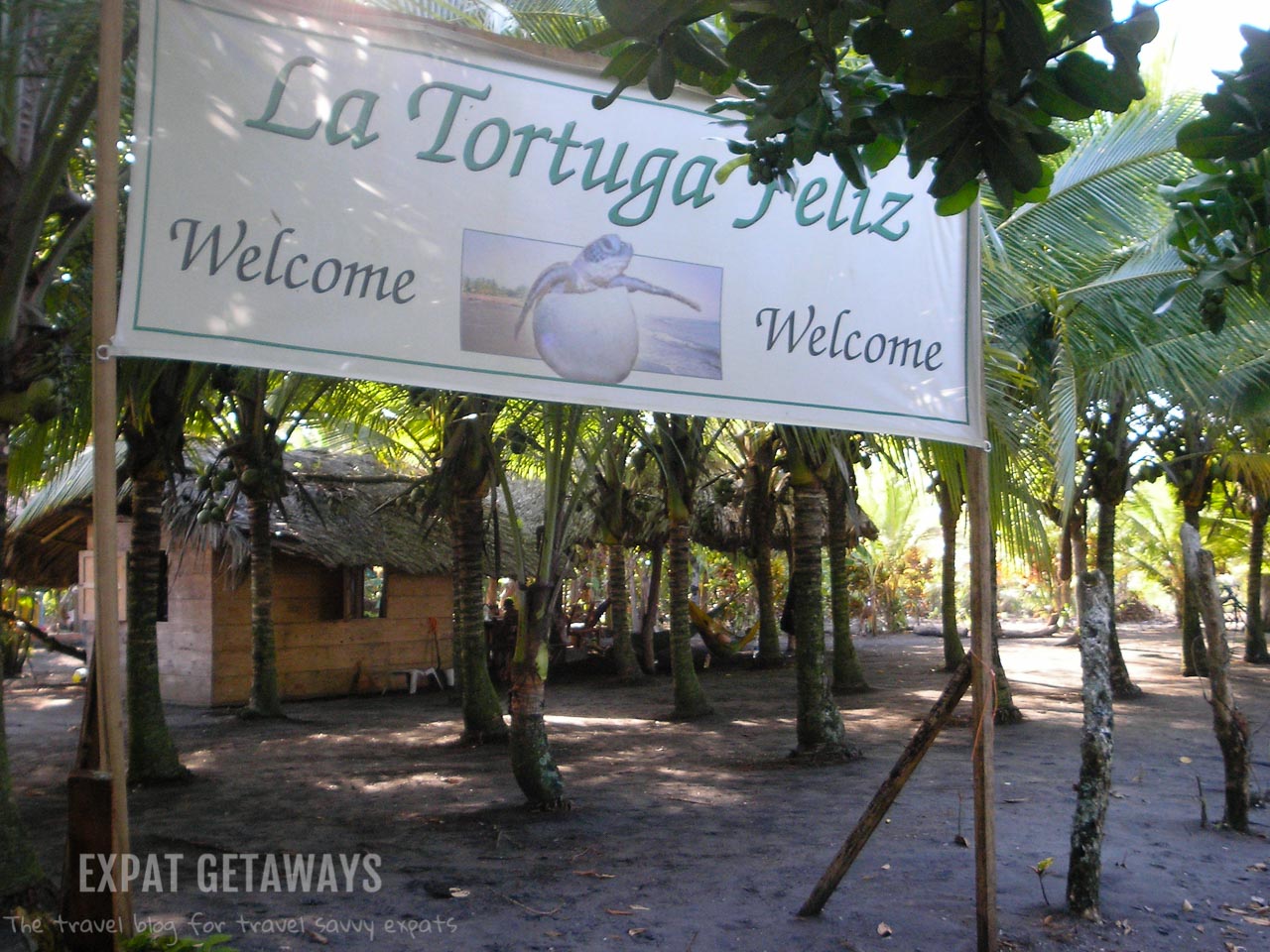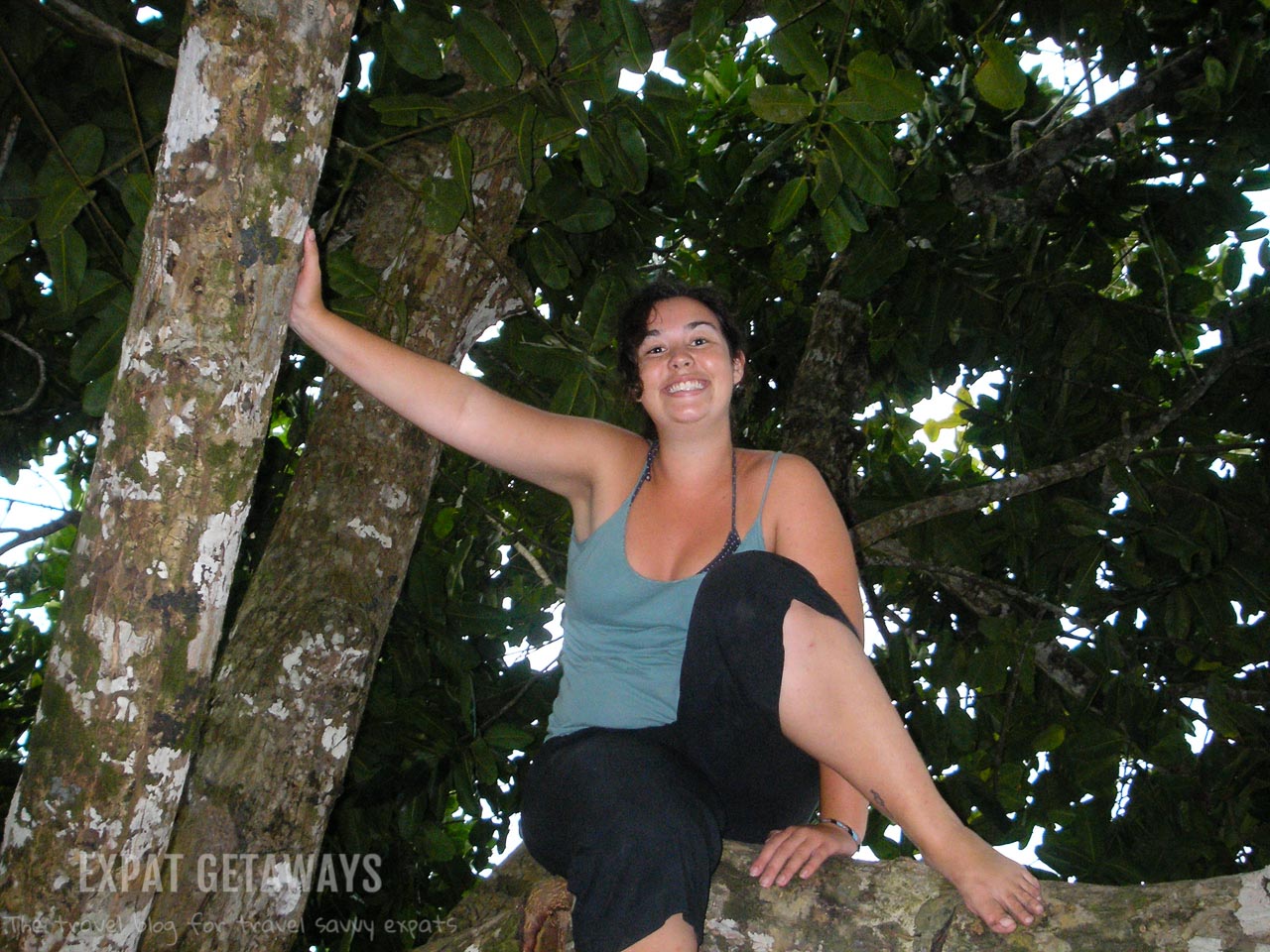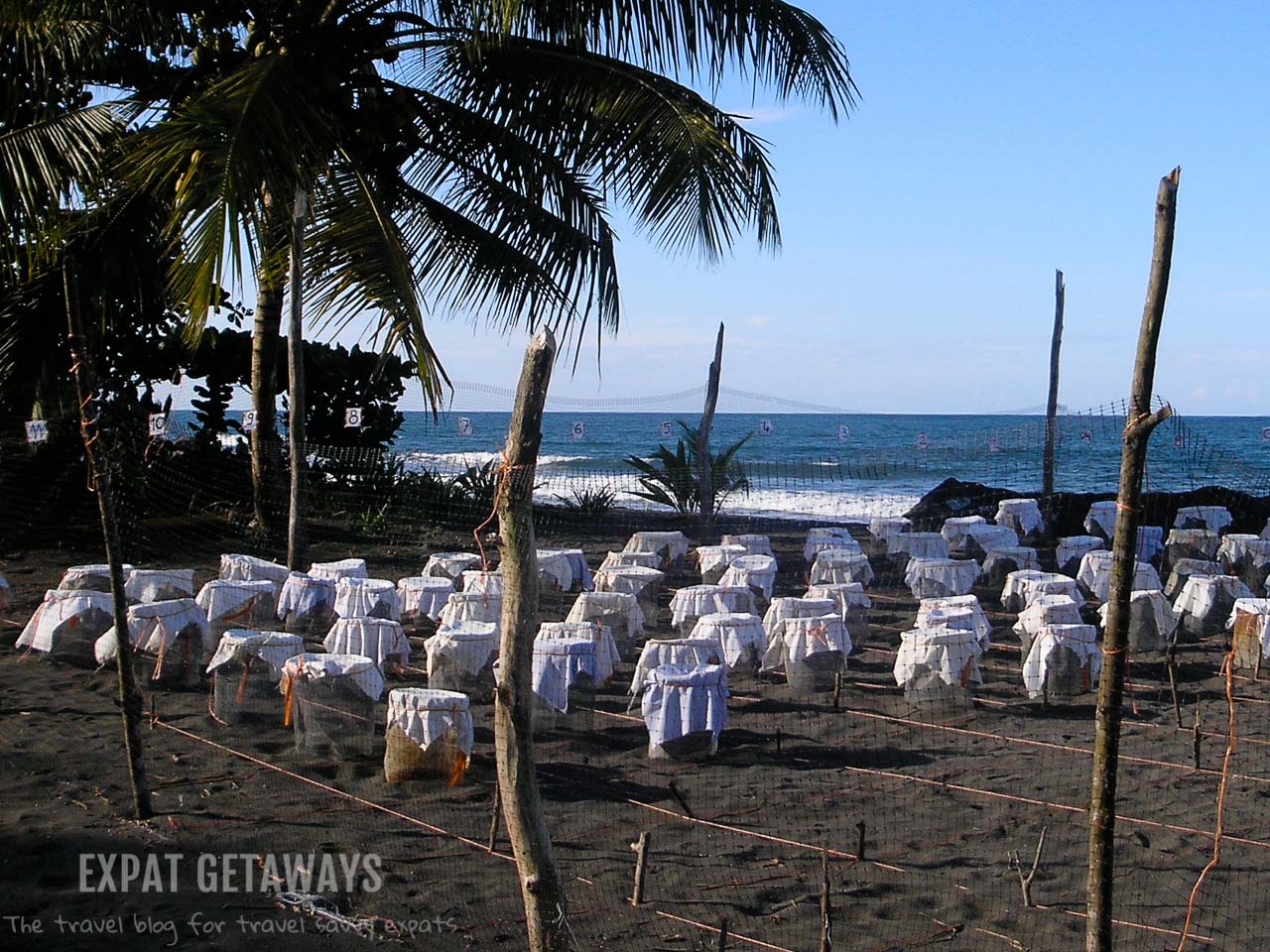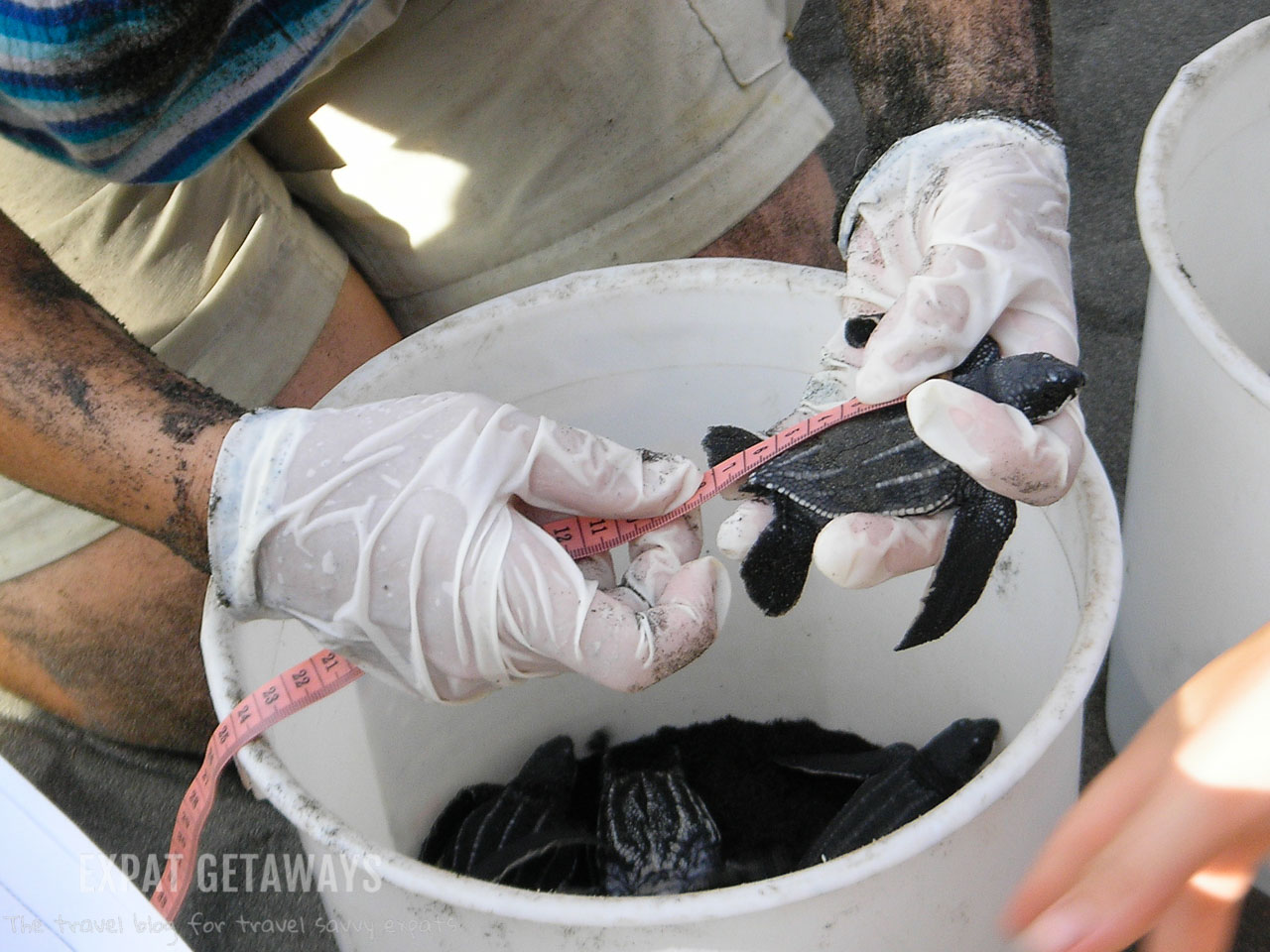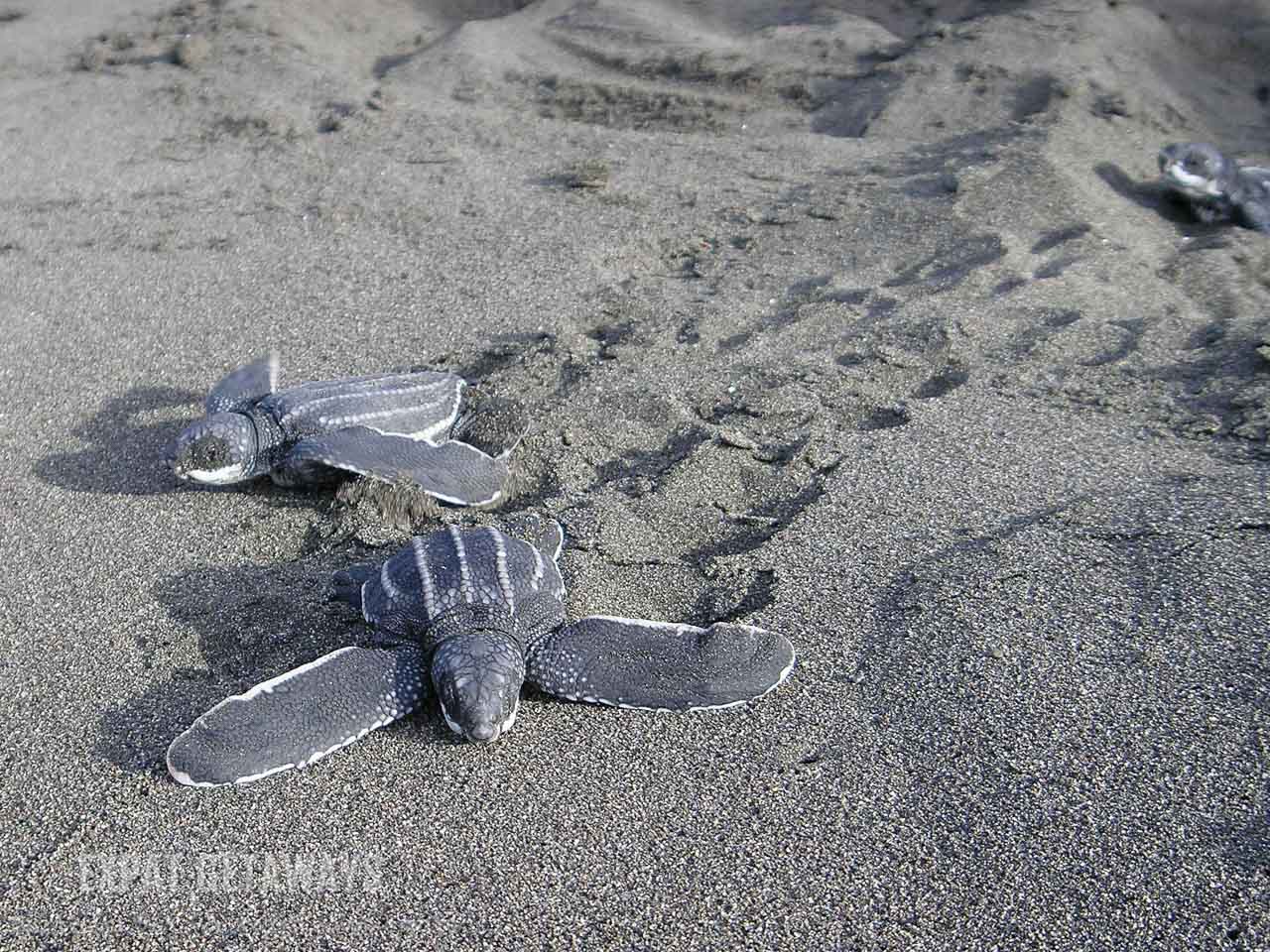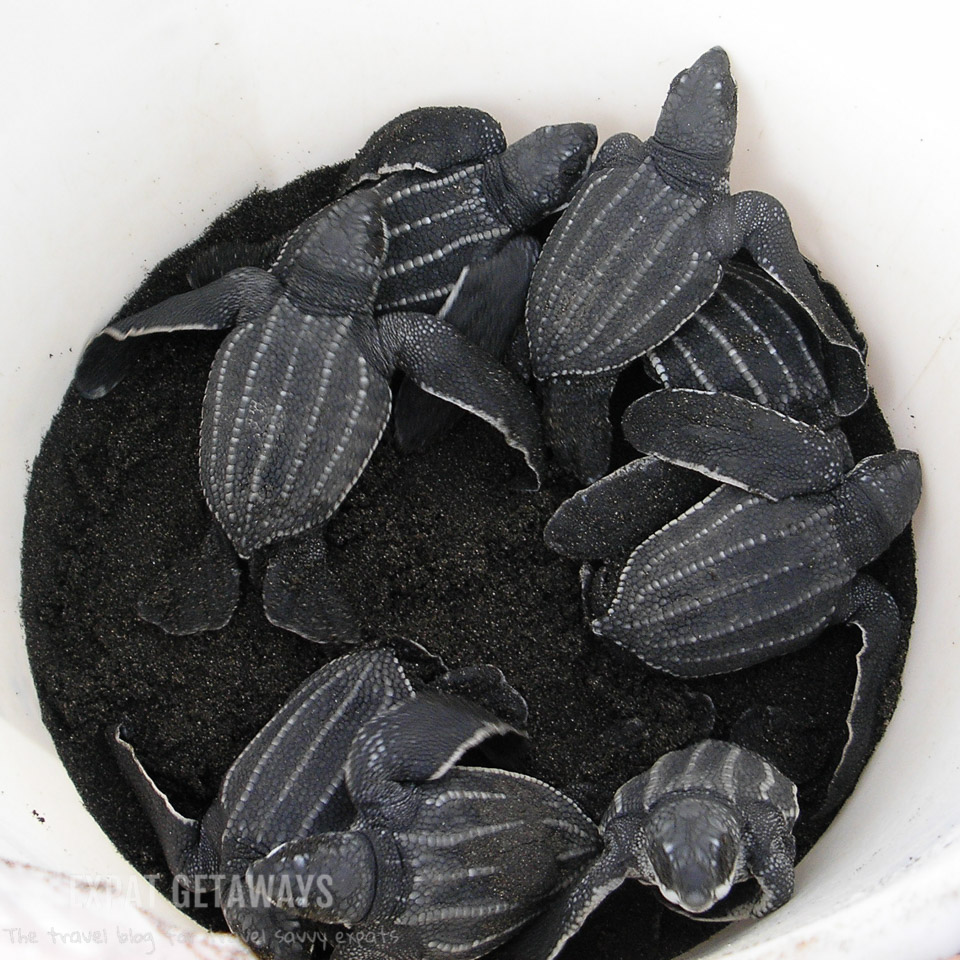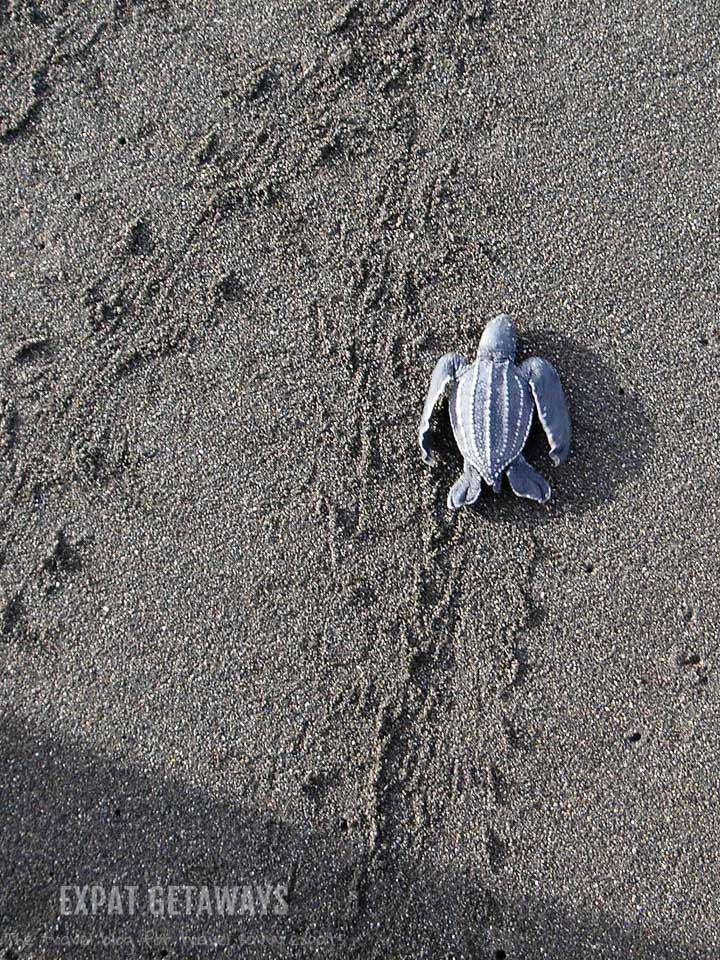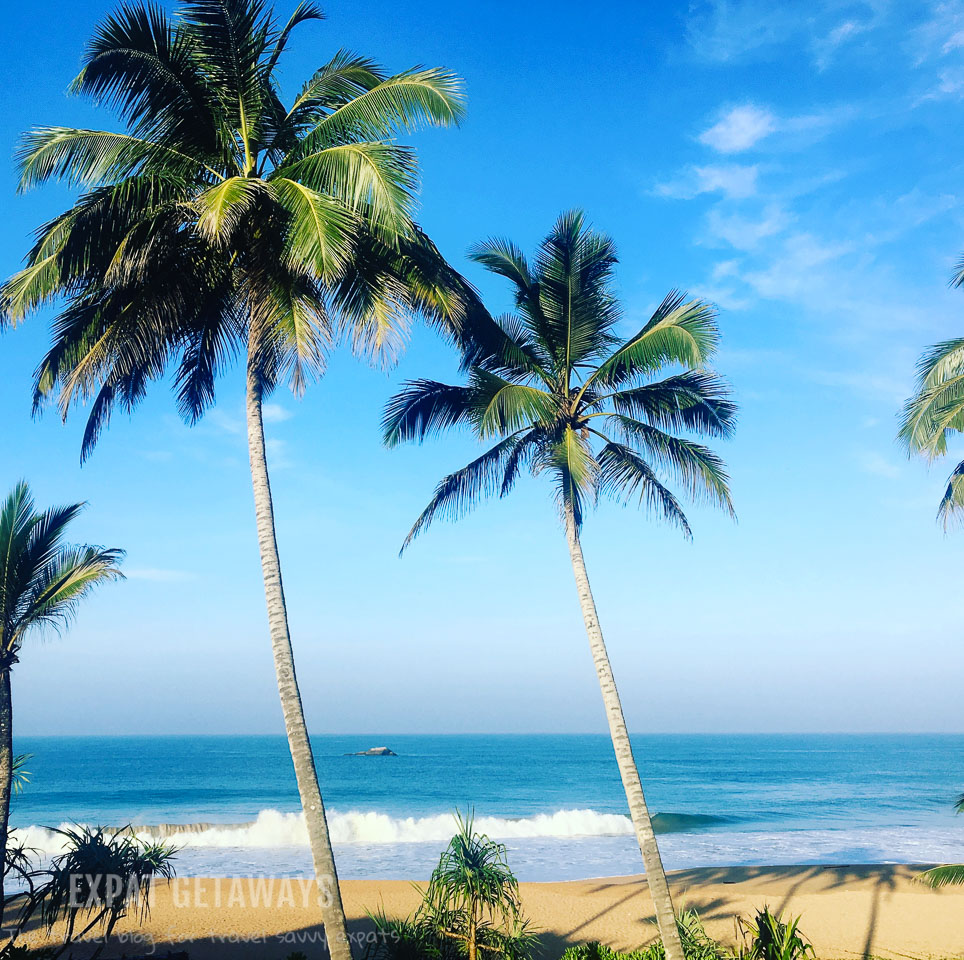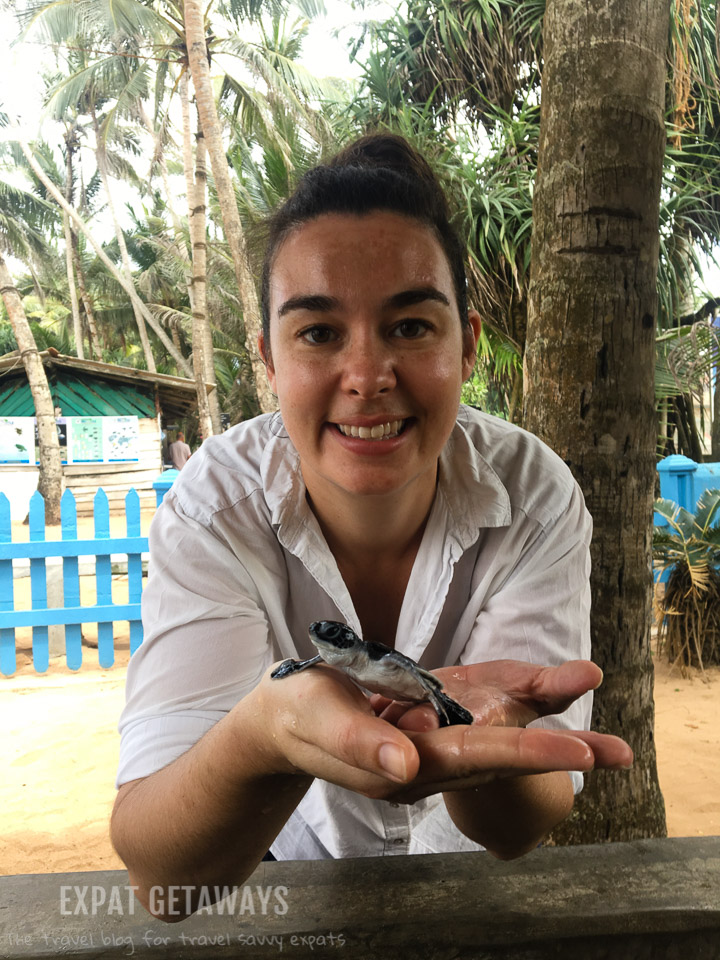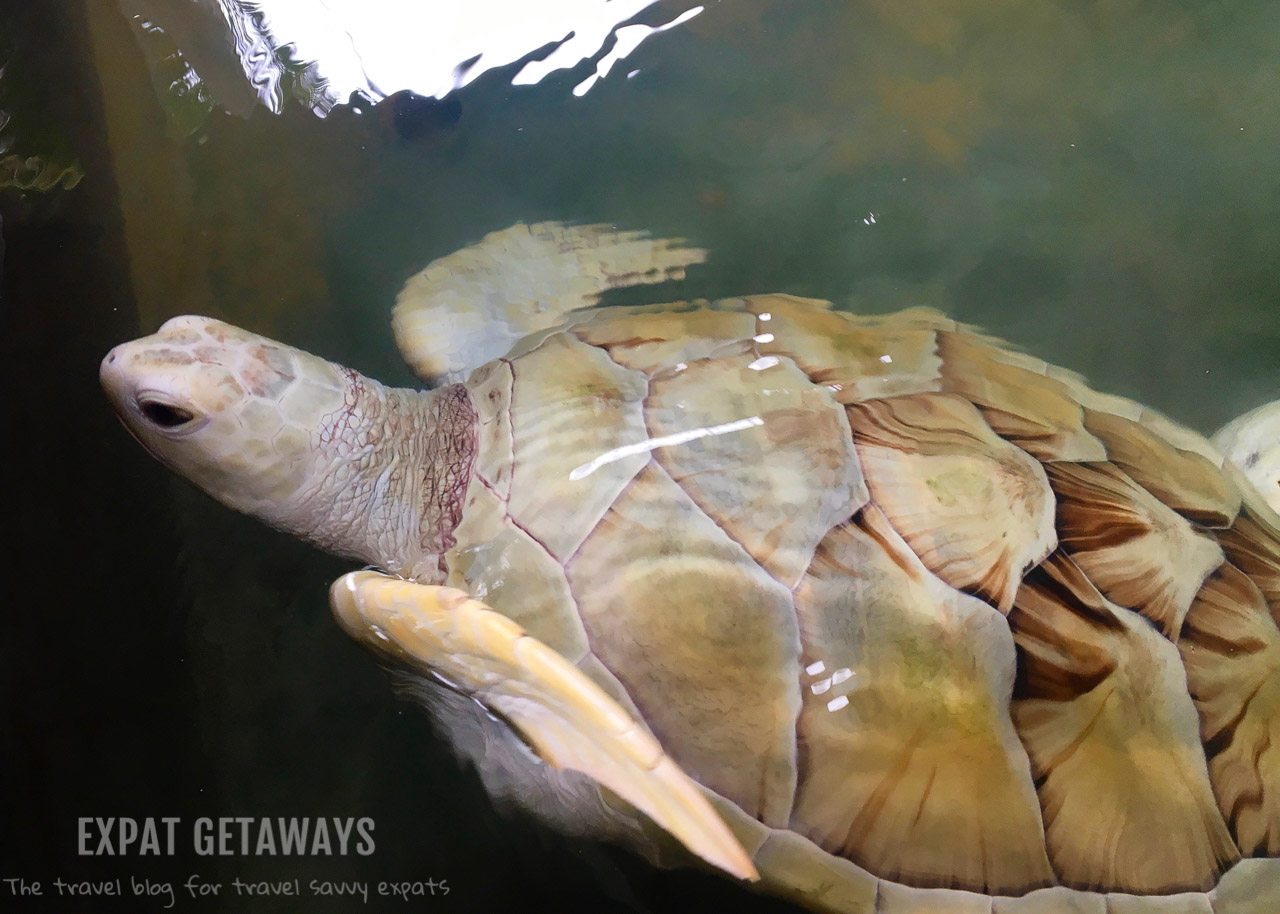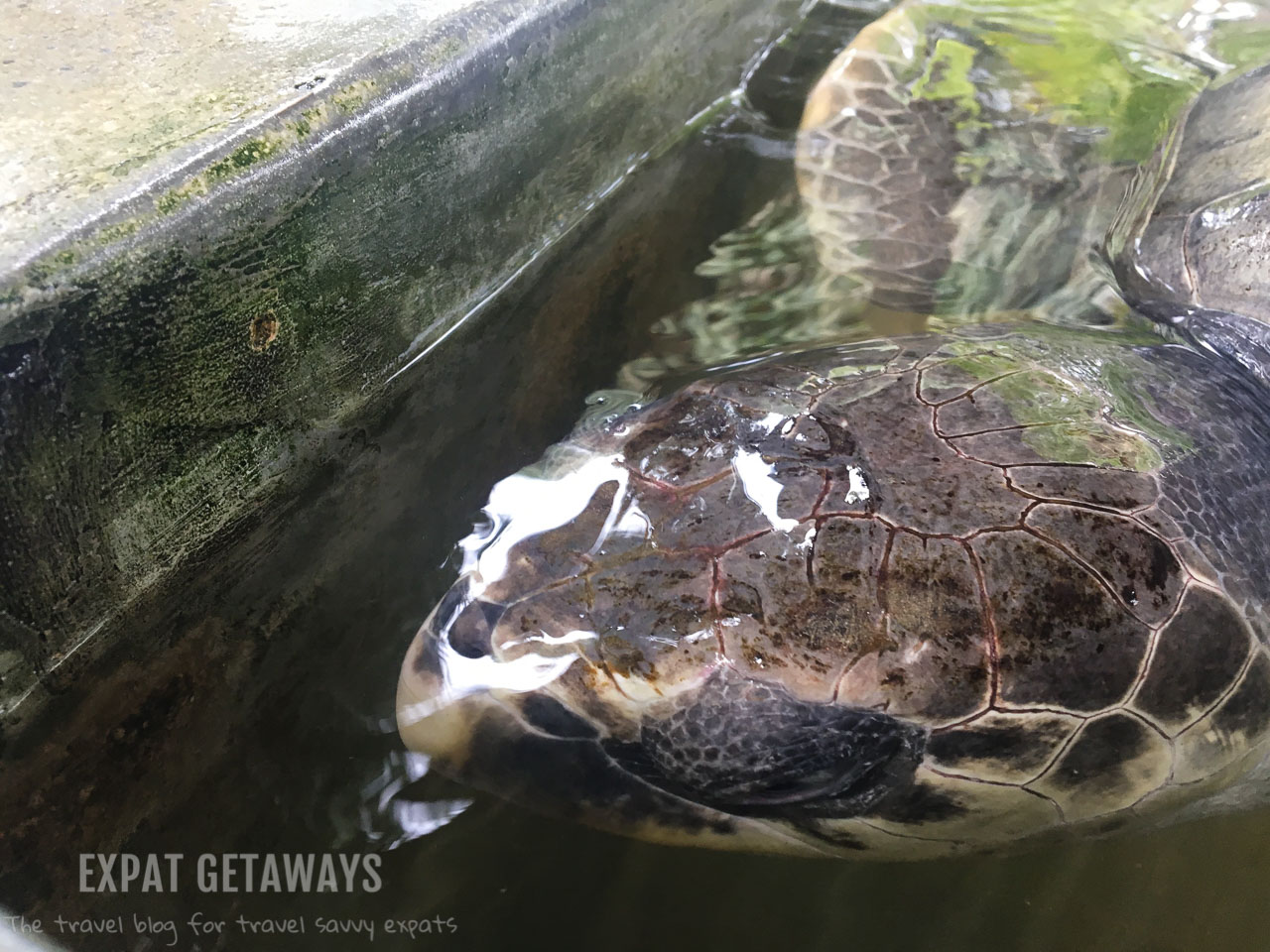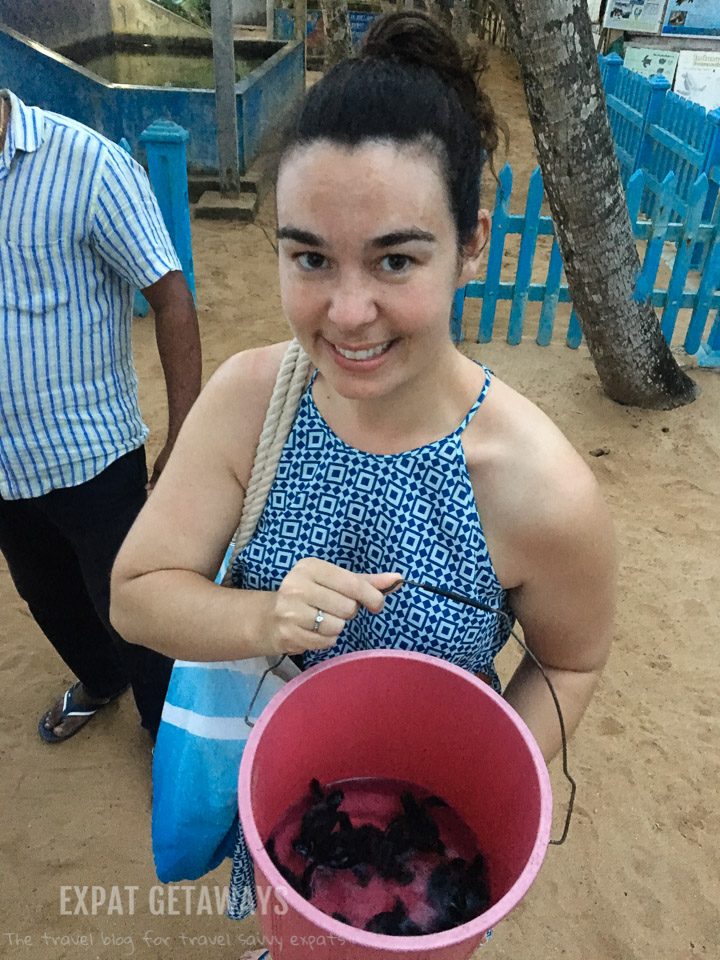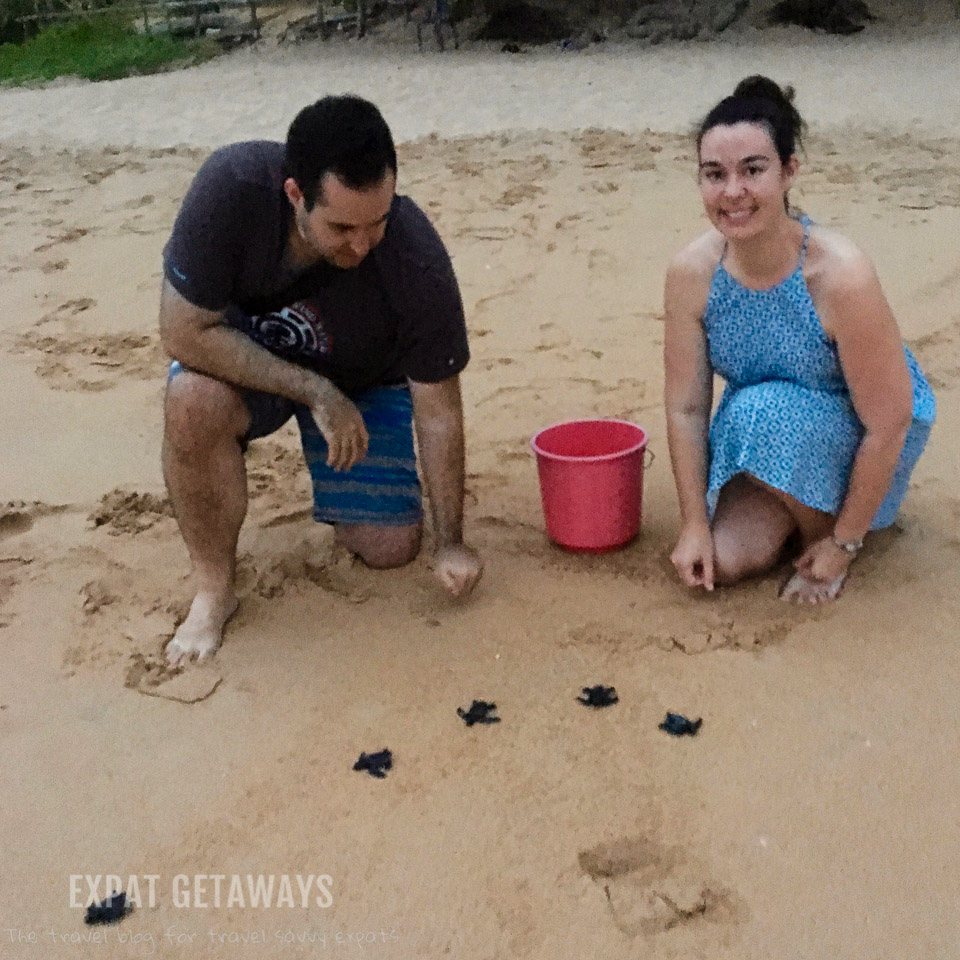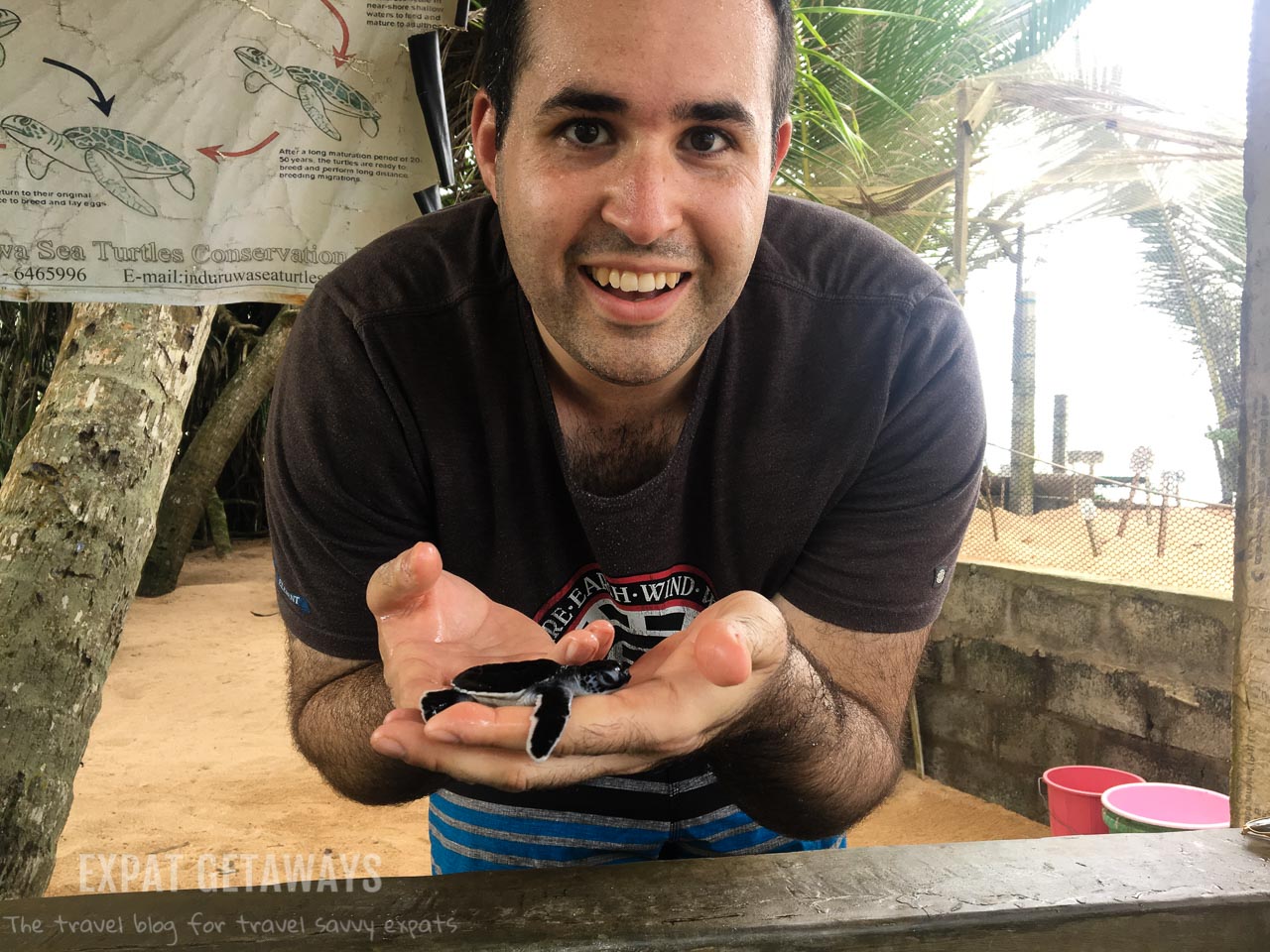

Last week in Sri Lanka I had an amazing experience. I got to release baby sea turtles into the ocean! It’s an experience I’ve had before in Costa Rica and something that I’m very passionate about. This time it was even more special because I got to share it with my husband Andrew.
If you know me you will know I have a slight obsession, including a tattoo of my favourite animal. I love all marine life and scuba dive whenever I get the chance to try and get up close. There have been some amazing encounters over the years including diving Sipidan where there were turtles galore, snorkeling in Cape Tribulation and visiting the Turtle Rehabilitation Centre on Fitzroy Island off of Cairns.
None quite compare to where it all started…
Let Me Take You Back to Costa Rica
In 2007 I backpacked through Central and South America and signed up for some volunteer work for extra university credit. This took me to La Tortuga Feliz, an amazing project on the Caribbean coast of Costa Rica.
This place was in the middle of nowhere! From San Jose it was a four-hour bus, forty-five minutes by car and then an hour on a boat ride to get to camp. The nearest town was a 14-kilometre walk and they were so big they had ONE old computer in case you needed the internet.
We split our time between patrols and hatchery duty.
Patrols
Patrols went out in shifts starting at dark to walk up the beach with a local guide; a former poacher retrained as a guide. The work was less lucrative than collecting turtle eggs and meat for sale, but more sustainable in the long term. When we spotted a turtle we would stop and collect her eggs. When she was done we’d see her safely back into the ocean and carefully carry the eggs back to the hatchery where they were put in a new protected nest.
I was there during green turtle nesting and leatherback turtle hatching season. On my first night out my guide pointed to something big and black under the moonlight. We got closer and it was a HUGE leatherback turtle and very late for the season. We collected data, measuring the size of the turtle’s shell, counting the number of eggs…things like that. This one was longer than the tape measure! A shell well over two metres!!
Back at camp everyone hated the new kid. First night out and I stumbled upon an ocean giant! They also questioned my data. Surely the turtle hadn’t been that big? We went back during the daylight to see the size of the nest and sure enough there was a giant circle in the sand and huge prints leading back to the sea.
It was a surreal experience and the night that started my turtle obsession.
Hatchery Duty
Back at camp the very first thing we learned was how to dig a turtle nest for the hatchery. The hatcheries were monitored 24/7 to protect them from poachers sneaking in and from natural predators like birds and crabs. The motto was “kill a crab save a turtle”.
There was also the fun part of hatchery duty- when the turtles erupted from their nest!
The key was to keep the process as natural as possible. The turtles would start to emerge and as they did we’d count them, measure them and release them to the sea. It could happen any time; day or night.
After a few days the nest would be exhumed. Additional data was collected like whether there were any eggs that hadn’t hatched or dead turtles. In the best case scenario there were still live turtles that hadn’t quite made it to the surface and they were given a helping hand to the water’s edge.
On another note I did once fall head first into a nest during the exhumation. …Picture my head literally in the sand and just my legs kicking frantically in the air trying to get out. Hilarious for everyone around to watch! Now add dead baby sea turtles… yuck, not so great for me!
Fun Turtle Facts I Picked up Along the Way
- The heat of the sand during incubation determines a turtle’s gender. So one year you might get more females and another more males.
- You need to change the location of your hatchery regularly. You might use the same site for a couple of seasons, and then give it a rest for a year. This is because there is bacteria left in eggshells that may affect the health of the turtles.
- It is really difficult for baby turtles to dig their way out through compacted sand. If people have walked over the nest during the two month gestation period it will be unlikely the babies will make it out alive.
- There is a 90% chance an egg will hatch and then a 1% chance that a baby turtle will survive to adulthood.
- Baby turtles gain the strength they need for survival on the journey from their nest to the sea. If you put them straight in the water they won’t have as good a chance.
- Turtles don’t like the light. Even on moonlight nights there was less chance of turtles coming up onto the beach. We had to have red flashlights to guide us out on patrols so that the turtles wouldn’t get confused.
- Adult turtles return to the exact same beach where they where born to lay their own eggs. They don’t reach sexual maturity for at least ten years in some species, for others it is closer to twenty.
- They can live to be 80-100 years old.
Threats to turtles
Now think about the environmental changes and coastal development that has gone on in the time it takes a turtle to reach sexual maturity and during their lifetime.
A few things to worry about:
- Climate change which could cause a global gender imbalance.
- Light pollution from developments discouraging the turtles to come up onto the beach.
- Building on sand dunes that would have been their nesting sites.
- Erosion of sand dunes at nesting sites.
- People walking all over the beach, trampling the nests that they don’t even know are there.
By the time turtles reach sexual maturity their birthplace has been changed by coastal development to the extent that they don’t have the ability to follow their instinct and return to nest. Not to mention if they do make it they still face natural predators like crabs, birds and lizards.
The situation is troubling all around the world, but especially so for developing nations.
Sri Lanka
Our trip to Sri Lanka was pretty spur of the moment. Mostly, I wanted to escape the Hong Kong winter by sitting on a beach.
Sri Lanka’s tourism market is growing rapidly at an unprecedented rate. It’s easy to see why. They have pristine beaches, beautiful forests and wildlife galore! Not to mention friendly people and great food.
However civil war embroiled the country for 25 years until 2009. It was largely a no-go zone for visitors. In that year there were just 448,000 tourists. Fast-forward to 2015 and that number grew to almost 1.8 million – an increase of 300%! Source: Sri Lanka Tourism Development Authority
It’s only natural with numbers like these that sustainable development is struggling to keep up with demand. New hotels and tourism infrastructure are popping up all along the coastline. I couldn’t find evidence of regulation of environmental projects like this.
Induruwa Sea Turtle Conservation Project
A quick TripAdvisor search on things to do pointed me in the direction of a sea turtle conservation project close to our accommodation.
There were no questions… we were definitely going!
My first instinct on arrival at the turtle hatchery was excitement. I got to see sea turtles of all ages and who wouldn’t love that! I got to share the experience with Andrew and got all nostalgic about my time in Costa Rica.
The Project
During our visit we saw hatchlings that were a few days old. There were some turtles that had been raised in captivity. We saw a poor little guy that only had two flippers, the other two had been caught in a fishing net and some locals had brought him in for treatment. There was a one in a million albino green turtle that would never have survived in the wild.
Turtle meat and turtle eggs are a traditional food in Sri Lanka. The owner of this project buys the eggs for 20 rupees each and puts them in the hatchery. Good dead done, clearly being given a chance in the wild is better than ending up on a dinner plate. Tourists are charge 500 rupees (about $US3.30) entry to look around. If you want to come back at sunset to release the hatchlings you make another donation.
Releasing Baby Sea Turtles
The centre was a short walk along the beach from our accommodation. It was a no-brainer that we were going back at sunset!
After another quick look around the project we were handed a bucket and shown the way down to the beach. Groups were spread along the beach in front of the centre and we started releasing the babies for their journey down the sand to the ocean. It was bitter sweet releasing them all the while knowing that of the babies released that night only a handful would survive to adulthood.
It was the highlight of our day and we were still buzzing the next morning.
Some Questions
After the excitement wore off I started reflecting.
- Are the locals really still buying turtle eggs to eat, or are they now disturbing the natural environment to create a turtle farm?
- There are a lot of these hatcheries along the coastline. There were at least three within a twenty-minute drive of our accommodation. Are they really there for the turtles, or are they there to profit from tourism?
- Why weren’t we given a briefing on handling the turtles for release? Ok it was pretty straight forward exercise, but there were little things like I made sure to go wash the sunscreen and insect repellent off my hands and didn’t use a flash on cameras because this would be harmful to the hatchlings. I knew this, but I’m sure others didn’t.
- The turtles are kept in water after they hatch for a couple of days. How does this affect the imprinting of their birth beach for adulthood?
Our Experience
While we weren’t given a huge amount of information during our visit, it seems like the Induruwa Sea Turtle Conservation project has their heart is in the right place. After doing some more research it certainly looks like this environmental NGO is doing the best they can with severely limited resources.
Their website details the operations of the projects, the expenses and planned developments. There is lots of information on the life cycles of turtles and details on how to get involved.
The staff were friendly and to be fair I didn’t ask my questions when I visited. Mostly because I became swept up in the excitement of releasing baby sea turtles!
Is the same of all turtle hatcheries in Sri Lanka? Likely, and I’d love to hear your thoughts.
Final Words
Is it worth visiting a turtle hatchery? Overall I’d say yes. It is a great opportunity to see these incredible creatures up close, at all life stages. Kids will love the chance to get up close releasing the babies to the sea and everyone will definitely learn something along the way.
BUT…
Do your research. If you can look up the specific centre you will be visiting before you arrive. If you can, ask the questions I didn’t get a chance to.
It would only take a few small improvements like giving tourists some guidelines for their turtle interaction to greatly enhance our experience. Easy fixes really!
Love it? Pin it!
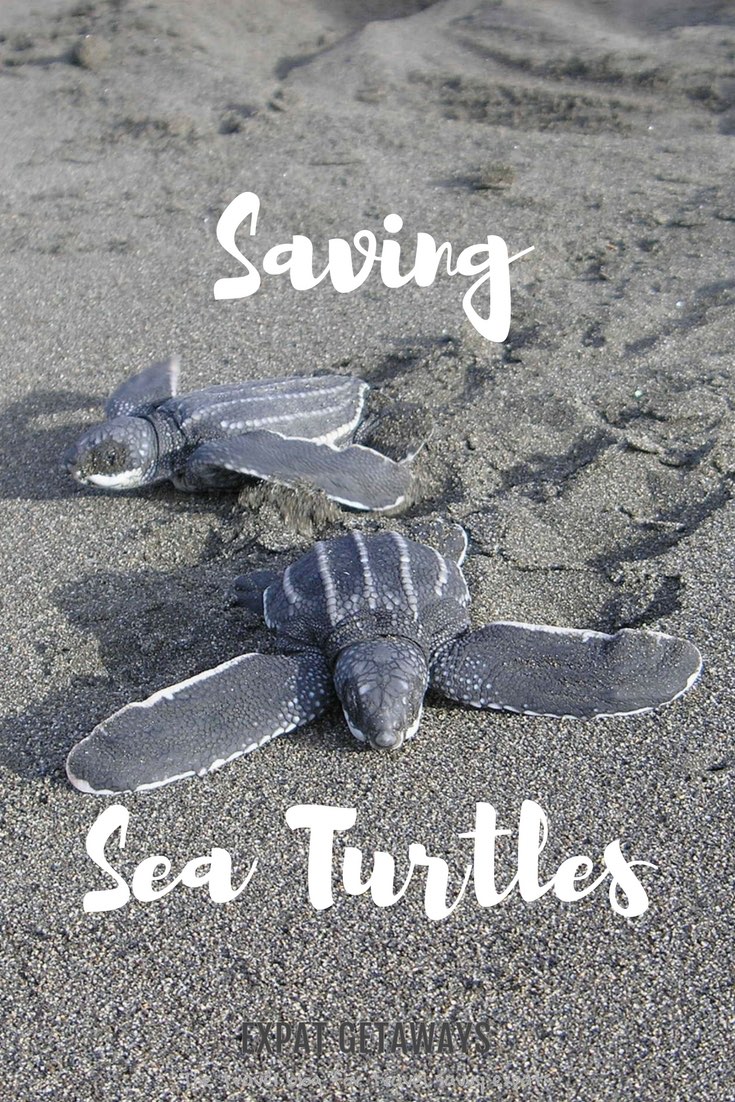
Saving sea turtles in Costa Rica was a life changing experience for me. I love marine life and eco tourism to I was very excited to have the chance again, this time in Sri Lanka with my husband!
